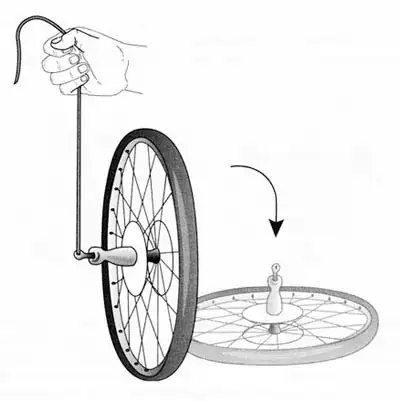Let's consider the classical example, the wheel hung by one side of the axle:
When the wheel is not spinning, it will tilt down the free end of the axle first.
When the wheel is spinning, it will rotate around the suspension point due to precession. I do understand how it comes to be—the acceleration at the top/bottom points change the direction of the part passing through that point so that the plane of rotation rotates around the vertical axis. When the rotation is “fast enough”, it's obvious.
But what happens in between? What if the wheel is spinning extremely slow. One turn per minute? One turn per hour? One turn per millenium? In fact in practice you won't ever achieve exactly zero angular momentum as it will inherit some from the Earth.
So how does the transition between the two kinds of behaviour look?
